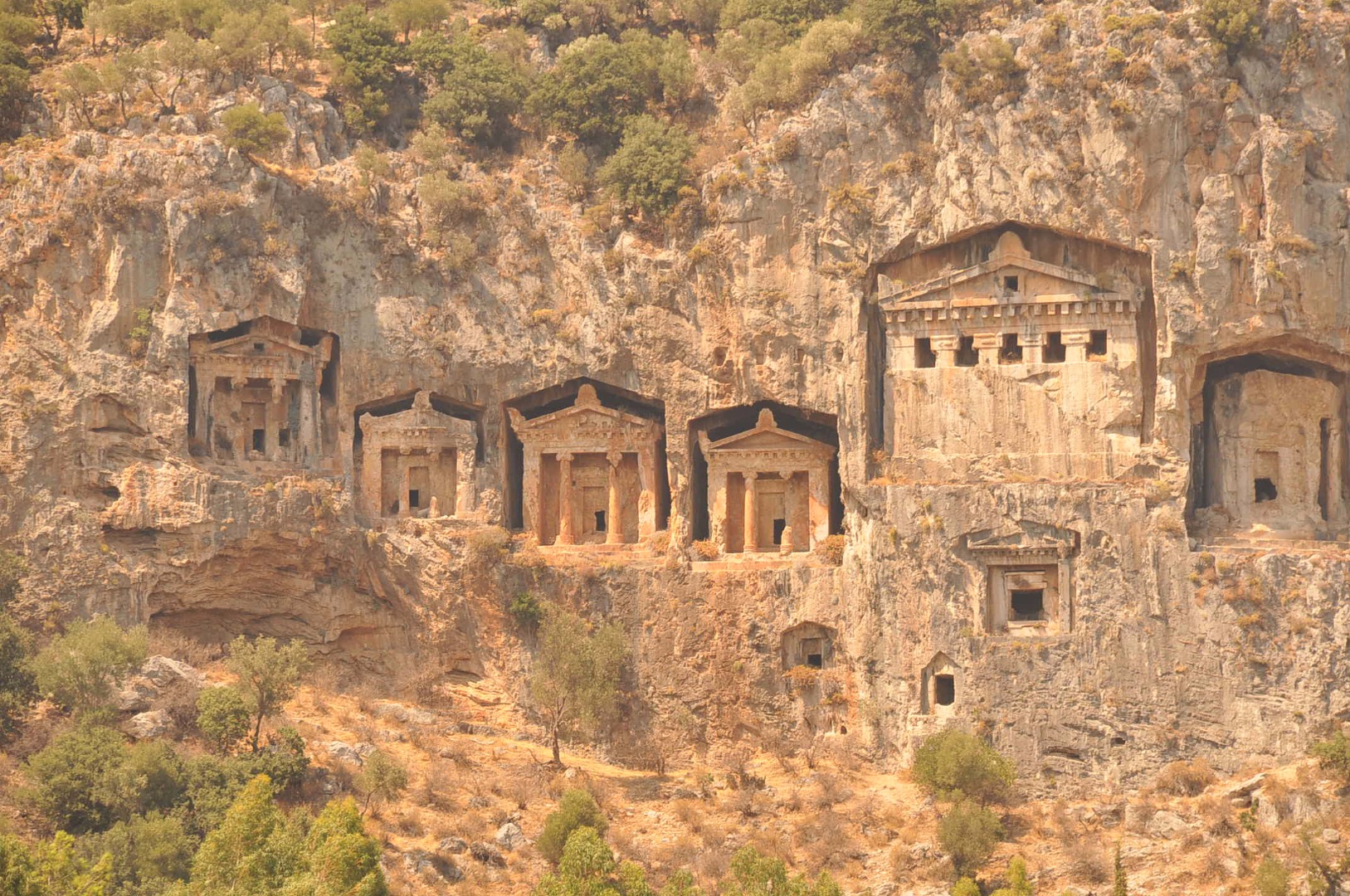Dalyan Kaunos

The ancient town of Caunos dates back to the 10th century B.C. Archaeological investigations have foundnevidence of the Classic,Hellenistic, Roman and Byzantium Ages. The once very importantharbour of the ancient town has receded from the sea due to the Dalyan Delta. Strabon (Skylaks), an important geographer of the ancient age, said “Caunos is at coast and Calbis flows near it.” Caunos is at the South coast of Karya opposite the Grek island of Rhodes. Caunos is surrounded by mountains that open out to the Menderes meadow from the North. Rock tombs looking out to the sea and valleys from West are also part of Karya with Likya to the South.
Caunos which had great strategical importance was a harbour city for ships traveling between the East Mediterranean and Aegean Seas. Heredot says:”Caunos people are native of this region but they say they are from Girit. There are effects of Karya in their language or their language effects in Karya’s. I can’t explain it completely.” Caunos people had particular traditions that have not been witnessed in any other ethnic group. Heredot says:”But their traditions are different from Karya’s and others. One of their most respectful traditions is drinking wine together with friends either women or man. The traditions of Caunos are distinctive from Karya and Likya civilizations. It is said that Caunos settled at the Karya – Likya border.
Ancient Caunos Town is 152 meters high from the sea andis on a peninsula that was formed by Acropolis and Küçükkale. In Archaic and Early Classic times Caunos stood in a charm between city walls at the foot of Acropolis and Küçükkale. The 5000 seating capacity of the Amphitheatre atracts a vast amount of attention due to its southwest position and architecture. The ancient theatre has three parts: stage, performance area and seating. Today the theatre is generally well preserved a part from the erosion of the stage and some of the seats, and the orchestral area has now been filled with earth. To the West of the theatre are ruins of a basilica church, other ruins present are Roman baths and a temple. Below there is a raised podium; behind it lays an unfinished building with columns without chamfer formed in a circular constuction. In here temple ruins are seen. Ancient relics have been found during archaelogical digs to the North of the old harbour – Sülüngür Lake, in addition to many statue bases, however the statues themselves have never been found.
